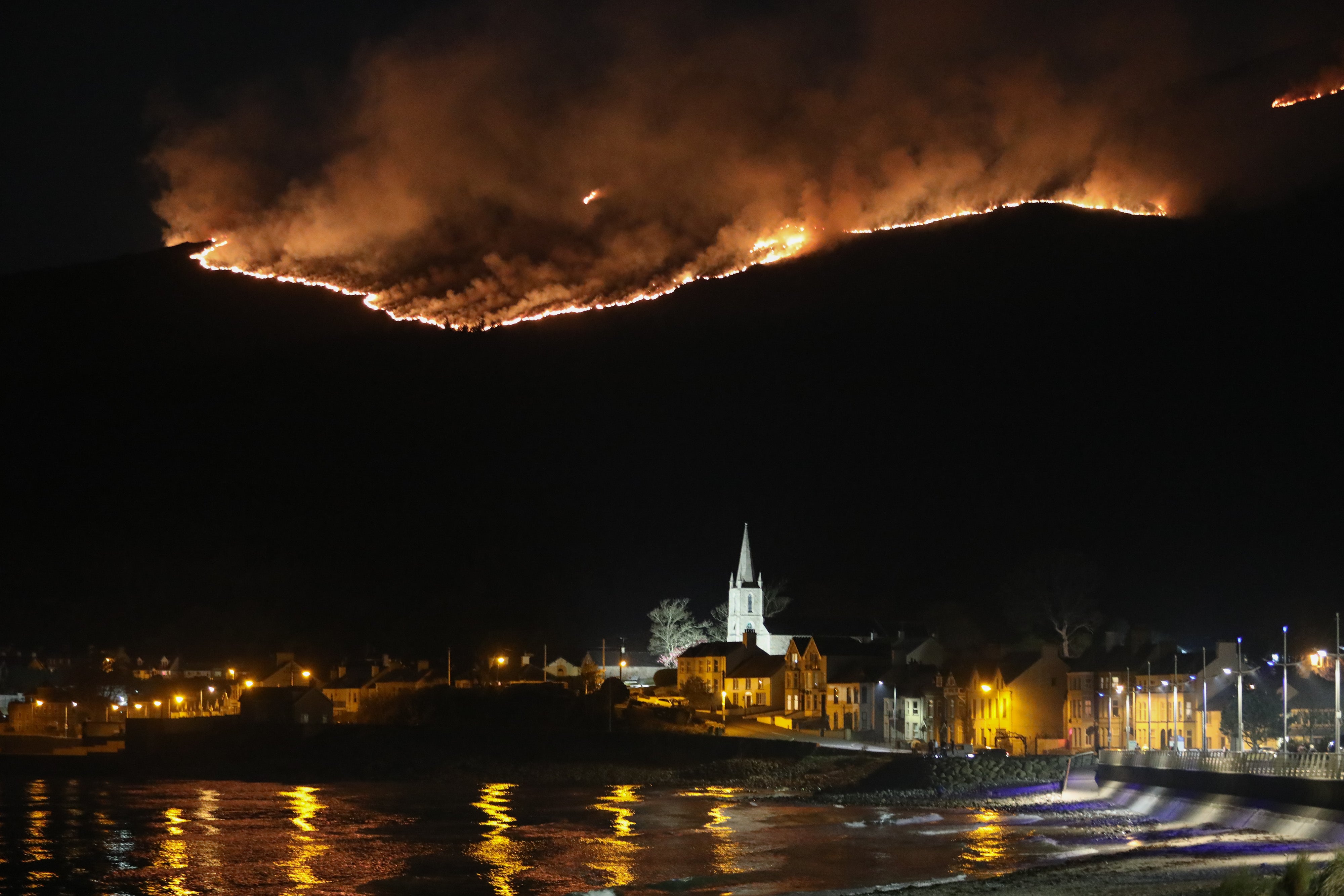Extreme weather hit Britain’s wildlife in 2021, National Trust warns
‘More than half of species in the UK are in decline and 15 per cent of wildlife species are under threat of extinction,’ the National Trust said

Extreme weather in the UK has wreaked havoc on wildlife in 2021, a conservation charity has said.
The National Trust said the destruction caused by floods, wildfires, storms and extremely high temperatures seen this year is indicative of the “new climate normal” in years to come.
The charity’s annual review of wildlife and nature highlights the impact of climate change on the UK’s wildlife species, both good and bad.
Butterflies suffered this year as a cold, wet spring resulted in 60 per cent of species seeing depleted numbers compared to the previous year – the lowest ever recorded in the Butterfly Conservation’s Big Butterfly Count.
The National Trust observed butterflies emerging later in the very cool spring and lower numbers at sites such as the New Forest, while the reintroduced large blue butterfly also saw numbers down in Somerset and Gloucestershire.
Nesting attempts for a number of species of birds were also hit by the cold spring weather.
At Mount Stewart in Northern Ireland, a pair of barn owls abandoned their breeding site and the lapwings at Blakeney Freshes were put off by the cold ground conditions, the charity said.
Researchers are still investigating the deaths of starving guillemots and razorbills found dead or dying along the east coast over the summer.
Tern species saw a mixed year around the country, though, with some thriving while others suffered due to “rising sea levels … human disturbance, predators and storm events around breeding season”.
Land was ravaged by extreme weather such as wildfires and storms, including the most recent Storm Arwen which uprooted hundreds of trees at the National Trust sites of Bodnant Gardens, Wales, and Wallington in Northumberland.
Wildfires in the Mourne Mountains in Northern Ireland devastated 200 hectares (500 acres) of land while others on Marden Moor, Yorkshire, destroyed 500 hectares (nearly 1,300 acres) of moorland, affecting a diverse range of plants and threatened birds in both sites.
Long periods of dry weather coupled with erosion from heavy rainfall in prior years saw a 300m cliff fall on the Dorset coast in April, the largest stretch of the coastline for 60 years, signifying accelerating erosion.
The apple blossom harvest in September was also very poor, the charity said, due to late frosts in April and May, while climate change is increasing the risk of tree disease, with the charity having to fell some 30,000 trees this year due to ash dieback, which is killing ash trees across the country, and sudden larch death.
However, certain species of fungi have thrived, as have orchids and grey seals, showing that changing weather in the UK isn’t all bad news.
Ben McCarthy, head of nature conservation and restoration ecology at the National Trust, called for more work to protect the UK’s “unique” wildlife, especially isolated or smaller populations.
He said: “Climate change is making some forms of extreme weather events the new normal. Heatwaves and heavy rainfall are becoming more frequent and more intense.
“What we’re seeing in the UK with the impacts of wildfires and severe storms such as Arwen and Barra, is how climate change is altering our landscapes forever.”
He added: “These extreme events are putting even more pressure on Britain’s wildlife, which is already in trouble with more than half of species in decline and 15 per cent of wildlife species under threat of extinction.
“Our nature is part of what makes the UK unique and we must all play our part to protect it.
“The scale of the challenge we face is huge, but there is much we can do to heal climate harm. Isolated or small populations are the most at risk from climate impacts.
“Our conservation work protects and restores wildlife in our precious landscapes to help nature literally weather the storms.
“By conserving nature and improving habitats we can support larger populations that are better able to respond to the drivers of change and help nature’s survival.”
Additional reporting by PA
Subscribe to Independent Premium to bookmark this article
Want to bookmark your favourite articles and stories to read or reference later? Start your Independent Premium subscription today.

Join our commenting forum
Join thought-provoking conversations, follow other Independent readers and see their replies